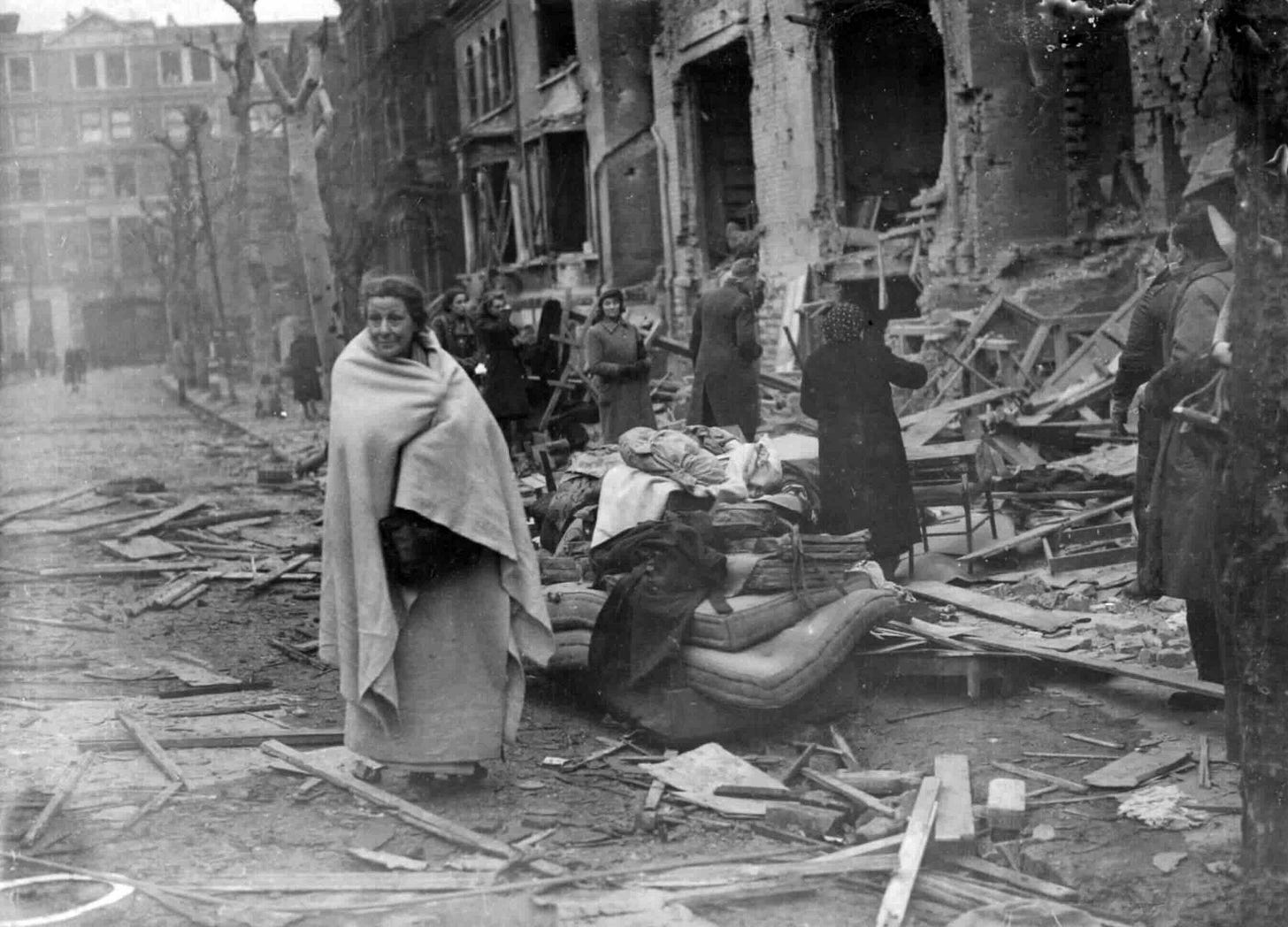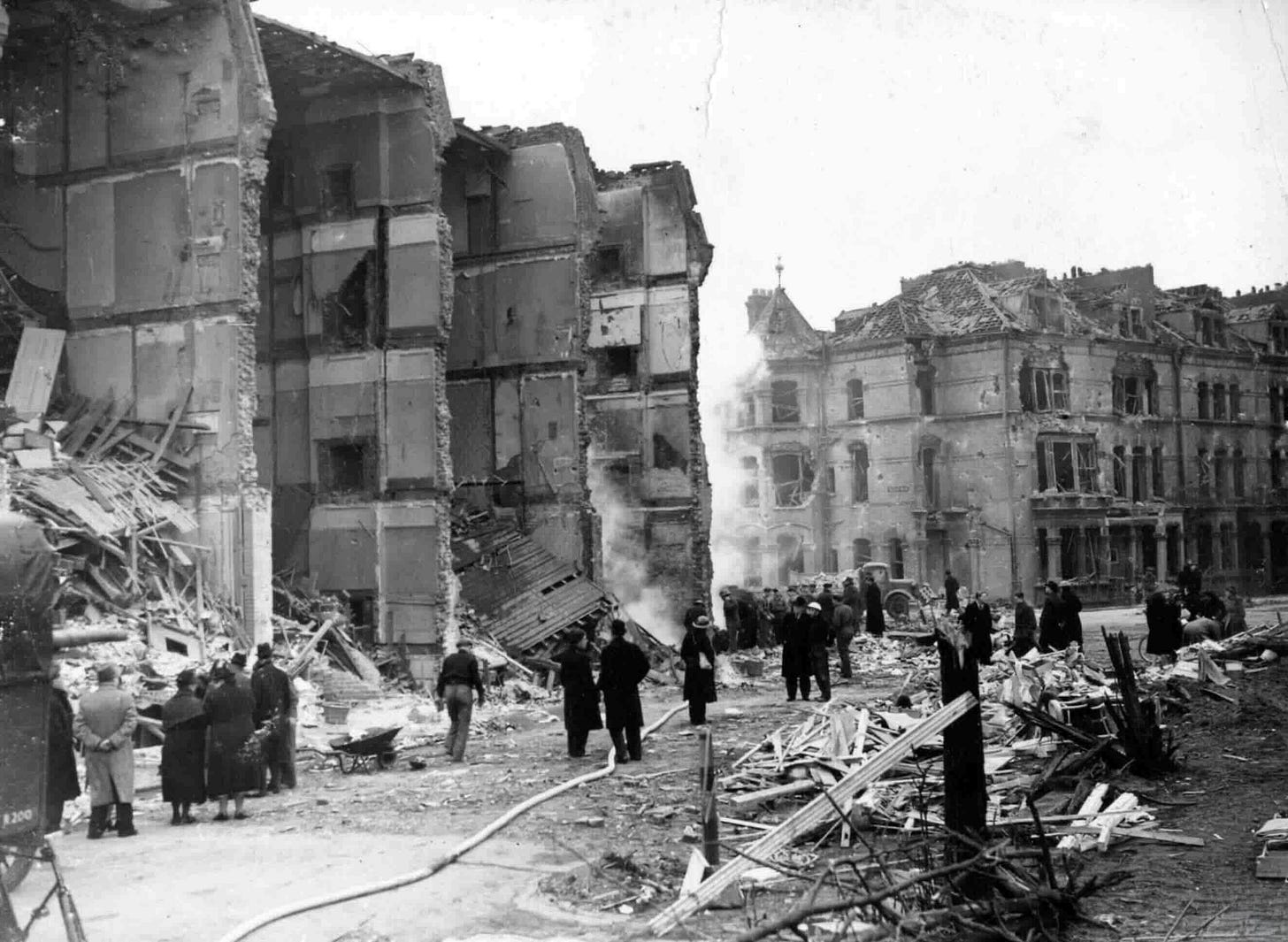Londoners adjust to a nightly 'Blitz'
23rd February 1944: There is widespread damage across London, including in Downing Street, and many are made homeless

The ‘ Baby Blitz’ now established itself as a regular nightly event in London. People had to re-accustom themselves to the business of air raid shelters, both indoors and outdoors.
The Morrison shelter had been introduced in 1941, and despite its discomforts, had proven itself as a lifesaver. Considered rather more secure but less comfortable were the public shelters, in some places available on every street.
Sometimes a green or dusky red ball comes floating through the clouds.
George Beardmore's diaries1 are particularly useful to historians of the period because he worked as a re-settlement officer for Harrow London Borough. He gives quite detailed descriptions of the process of helping those who were bombed out.
Nevertheless, George, his wife Jean, and their infant daughter Victoria were just as much at risk as anyone else:
23 February
The siren goes about 2 a.m. or at almost any time. It always wakes me. I rouse Jean, we leap into our outdoor things, and while Jean grabs a bagful of valuables and papers, I come down with Victoria in my arms, as often as not fast asleep, and we hurry out to the reinforced Shelter so conveniently placed near the front gate.
This has already been opened by the Fire Guard — normally it’s kept locked against lovers, and small boys taken short — our paraffin stove is lighted, and we settle down with our neighbours in the three-tier bunks. Other Fire Guards drift in — one night while somnolent we were all roused by the most appalling crash which turned out to have been a visiting Fire Guard’s steel helmet dropping onto the concrete floor — while outside the night becomes noisy with bangs, crackles, and rumbles rolling round the heavens.
Keep reading with a 7-day free trial
Subscribe to World War II Today to keep reading this post and get 7 days of free access to the full post archives.



